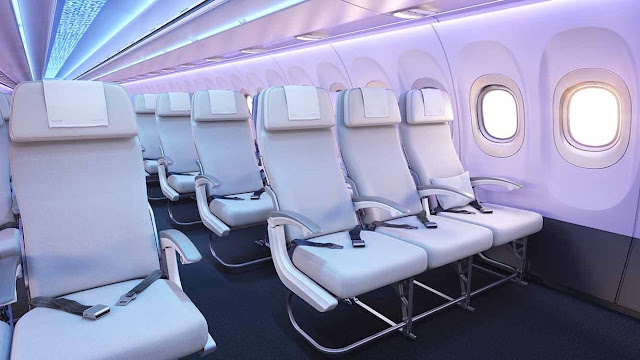A revolution in long-haul flight: the A321XLR
Airbus has officially launched the A31XLR for Xtra Long Range. With a range of more than 8,700 kilometres (4700 nm), the single-aisle aircraft is expected to enter service in 2023 and disrupt long-haul air transport. New lines may then be created.
 |
| The Airbus A321XLR (©Airbus) |
On the first day of the 53rd Paris-Le Bourget International Air Show, Airbus announced the launch of the A321XLR. At the same time, the manufacturer received 31 orders for its new model, including 27 from Air Lease (launch customer) and 4 from Middle East Airlines.
An aircraft that perfectly meets the demand
On the Airbus side, the launch of the aircraft does not seem to be a bet on the future. The European manufacturer continues to move cautiously. Reuters recently reported that Airbus wanted to secure 200 to 300 orders before launching the aircraft. The A321XLR meets a current demand from airlines: a single aisle with a wide operating range and unbeatable fuel consumption.
Technical improvements
The different versions of the A321 allow an increase in range: +15% for the A321LR compared to the A321neo, and +15% for the A321XLR compared to the A321LR. The increased range is made possible by a new central tank (Rear Central Tank) capable of carrying 12,900 litres of kerosene. The front space of the cargo compartment is dedicated to luggage and freight (with an optional additional tank in the centre). The landing gear will be reinforced for a maximum take-off weight of 101 tonnes.Aerodynamic sharklets and fuel-efficient engines deliver exceptional environmental performance: 20% reduction in fuel consumption per seat, 5,000 tonnes of CO2 less per year, and a 50% reduction in noise footprint for passengers and airports.
In a 1-class configuration, the aircraft can carry up to 244 passengers. The aircraft has an Airspace cabin, with LEDs, new panels and windows, new toilets. The luggage compartments are larger, called "XL bins", providing 40% more space.
 |
| The Airspace cabin (©Airbus) |
There are new opportunities for airlines.
The aircraft is capable of flying for more than 9 hours, over more than 8,700 kilometres (4700 nm). Many airlines could be operated, connecting Europe to the east coast of the United States, India as well as Asia to the Middle East or Australia (Tokyo-Sydney for example). North America can be served from South America, such as Miami-Buenos Aires. Some low-traffic lines could be profitable, thanks to a high filling rate in fuel-efficient aircraft. We can imagine lines like Lyon-New York or Nice-Doha.Better still, with its 180nm ETOPS certification, the A321XLR will also be able to provide regular services to the Caribbean from a large part of the old continent.
Airbus scores a point against Boeing
Indeed, Airbus secures many orders on the middle of market. Boeing must decide whether to launch its new NMA program. In addition, "the A321 XLR will consume 30% less kerosene than a B757" said Christian Scherer, Airbus sales manager. On social networks, Airbus director Guillaume Faury added, "we give the market what it asks for... ».Boeing's NMA program is still awaited and should be announced soon. Its development cost would be estimated at 10 or even 15 billion dollars. It could carry up to 250 passengers. One of the constraints of this aircraft would be its positioning on the market. It must not be too big to compete with the 787-8 or too small to compete with the Boeing 737MAX-9, -10.



Comments
Post a Comment